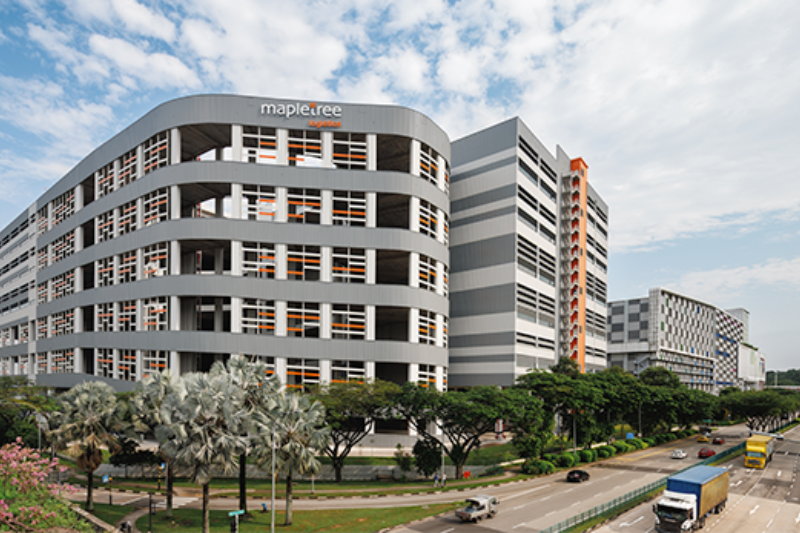Earnings season is here, and three blue-chip REITs are stepping up to the plate next week.
For dividend investors, these reports serve a purpose beyond the headlines. They’re your financial health check — a chance to ensure the distribution engine continues to hum along smoothly.
But not all earnings releases tell the same story.
CapitaLand Integrated Commercial Trust (SGX: C38U) offers a window into Singapore’s retail and office recovery, with its ION Orchard acquisition now bedded down.
Mapletree Logistics Trust (SGX: M44U) faces headwinds from currency weakness and China challenges — making this a critical test of resilience.
Elsewhere, Mapletree Industrial Trust (SGX: N2IU) provides insight into the data centre boom and whether its North American expansion is paying off.
The question isn’t just whether distributions held up.
It’s whether these REITs are building momentum or merely treading water.
Here’s what dividend investors should watch when the numbers land.
CapitaLand Integrated Commercial Trust (SGX: C38U): Reporting on 28 October 2025
Singapore’s largest REIT enters earnings season with S$26 billion in assets and a fresh tailwind: ION Orchard has been in the portfolio since 30 October 2024.
The key question is whether this premium asset can sustain its contribution to distribution growth.
For 2025’s first half (1H’25), CICT’s DPU rose 3.5% year on year to S$0.056, driven partly by ION’s six-month contribution and lower interest costs.
Here’s what you should watch:
Rental reversion momentum: CICT achieved 7.7% positive reversions for retail and 4.8% for office in 1H’25.
Will the reversions moderate — and if so, by how much? Consistent reversions signal pricing power; weakening reversions suggest tenants are pushing back.
CapitaSpring consolidation: CICT acquired the remaining 55% stake for S$482 million in August.
This move should boost distributable income, but the proof lies in the numbers. How much DPU accretion will we see?
Asset enhancement initiatives: IMM Building’s S$48 million upgrade hit 98.6% committed occupancy, while Gallileo Frankfurt secured the European Central Bank as anchor tenant for its €180 million transformation.
These projects represent future income streams — investors should watch for completion timelines and stabilised yields.
The underlying portfolio metrics remain solid: 96.3% occupancy as of 30 June 2025.
But with shopper traffic growth moderating to 3.4% excluding ION Orchard, the real test is whether CICT can maintain distribution growth.
Mapletree Logistics Trust (SGX: M44U): Reporting on 28 October 2025
Mapletree Logistics Trust enters earnings with a 12.4% year-on-year DPU decline hanging over it from last quarter — a sharp reminder that currency headwinds and China weakness can hurt even diversified portfolios.
The logistics REIT, which manages S$13 billion in assets across 178 properties in nine Asia-Pacific countries, faces a critical test: can it stabilise distributions as regional currencies remain under pressure?
Here are the three key signals you should watch:
Mainland China woes: The market delivered a painful negative 7.5% rental reversion for the first quarter of the fiscal year ending 31 March 2026 (1Q’FY26), though this improved from negative 9.4% the prior quarter.
Occupancy in the market lags at 93.0%.
Is the bleeding slowing, or will further deterioration drag down the entire portfolio?
China represents a meaningful chunk of MLT’s assets — continued weakness here puts distribution sustainability at risk.
Currency impact: The Chinese yuan, Hong Kong dollar, and Korean won all depreciated against the Singapore dollar in 1Q’FY26, dragging down its distributable income.
Investors need clarity on how much currency drag persists and how much hedging can offset the impact
Capital recycling: MLT completed four divestments at premiums ranging from 6.8% to 39.8% above book value.
The question: can management redeploy proceeds into higher-yielding assets that offset weakness elsewhere? Portfolio reconstitution only works if replacement properties deliver better returns.
The headline occupancy of 95.7% looks respectable, and rental reversion excluding China came in at a decent 2.8%.
But strip away the divestment gains that contributed S$0.00114 per unit in the prior year, and DPU from operations still fell 7.3% year on year.
For dividend investors, the critical question is simple: has MLT found its floor, or are we still sliding?
Mapletree Industrial Trust (SGX: N2IU): Reporting on 30 October 2025
Mapletree Industrial Trust’s 4.7% DPU decline in 1Q’FY26 tells only part of the story.
Strip out last year’s divestment gains and one-off compensation, and the operational decline was a more modest 1.5% year on year.
The S$9 billion industrial REIT — with 54.8% weighted toward data centres — now faces the question every investor wants answered: can its data centre portfolio and Singapore rental strength offset currency weakness and rising borrowing costs?
Three critical factors stand out:
Data centre lease-up progress: MIT completed the final JPY 5.2 billion fitting-out phase for its Osaka data centre in May 2025.
This facility should contribute meaningful income — but only if tenants sign up.
North American data centres currently sit at 88% occupancy, below the portfolio average of 91.4%. Are hyperscalers and enterprise clients filling the space, or is competition intensifying?
Singapore’s rental reversion: The home market delivered robust 8.2% rental reversions in 1Q’FY26, with general industrial buildings at 9.5% and hi-tech at 5%.
These are strong numbers, but Singapore represents the bulk of MIT’s income.
Can this momentum hold as more leases come up for renewal, or will tenants start pushing back?
Third, portfolio reconstitution impact. MIT announced the divestment of three Singapore industrial properties for around S$535 million in May 2025, expected to complete by 3Q’FY25.
Combined with the Georgia data centre sale for US$11.8 million, MIT is actively recycling capital.
The test: where does this money go, and at what yields?
Reinvestment gains will determine whether these moves create or destroy value.
The Tokyo acquisition from October 2024 provided a boost, while the US dollar’s depreciation against the Singapore dollar dampened North American contributions.
Higher borrowing costs from repriced interest rate swaps also nibbled at margins.
MIT’s diversification across Singapore, North America, and Japan offers resilience. But with occupancy dipping slightly to 91.4% from 91.6% last quarter, investors should watch whether operational momentum is building or fading.
The data centre thesis remains intact — the question is execution.
Get Smart: The interest rate tailwind test
All three REITs share a common opportunity that’s easy to overlook amidst the operational noise: falling interest rates.
CICT’s borrowing costs dropped to 3.4% in 1H’25, contributing to its 3.5% DPU growth.
That’s the power of a lower rate environment flowing straight through to distributions.
But here’s what matters for the quarters ahead: Singapore’s three-month SORA rate has declined from its 2023 peak, and the US Federal Reserve has signalled further easing.
For REITs carrying billions in debt, every percentage point decline matters.
The question isn’t whether rates are falling — it’s how much of this tailwind each REIT can capture.
REITs with shorter debt maturity profiles may benefit faster as they refinance at lower rates.
Those with higher gearing ratios see a bigger boost to distributable income.
Watch the interest coverage ratios and weighted average cost of debt in next week’s results.
A declining cost of debt trend signals that the worst of the interest rate pain is behind us. Stable or rising costs suggest the REIT is still locked into expensive hedges or fixed-rate debt.
For dividend investors, this is the rising tide that could lift all boats — if management has positioned the balance sheet correctly.
The REITs that capture this tailwind most effectively won’t just maintain distributions. They’ll grow them.
Explore Singapore’s top “evergreen” stocks with our FREE report. It spotlights 7 Singapore blue-chip stocks with solid dividends and growth potential. Click here to download it now to create a flow of dividend income, regardless of market conditions.
Follow us on Facebook, Instagram and Telegram for the latest investing news and analyses!
Disclosure: Chin Hui Leong owns all the shares mentioned.






